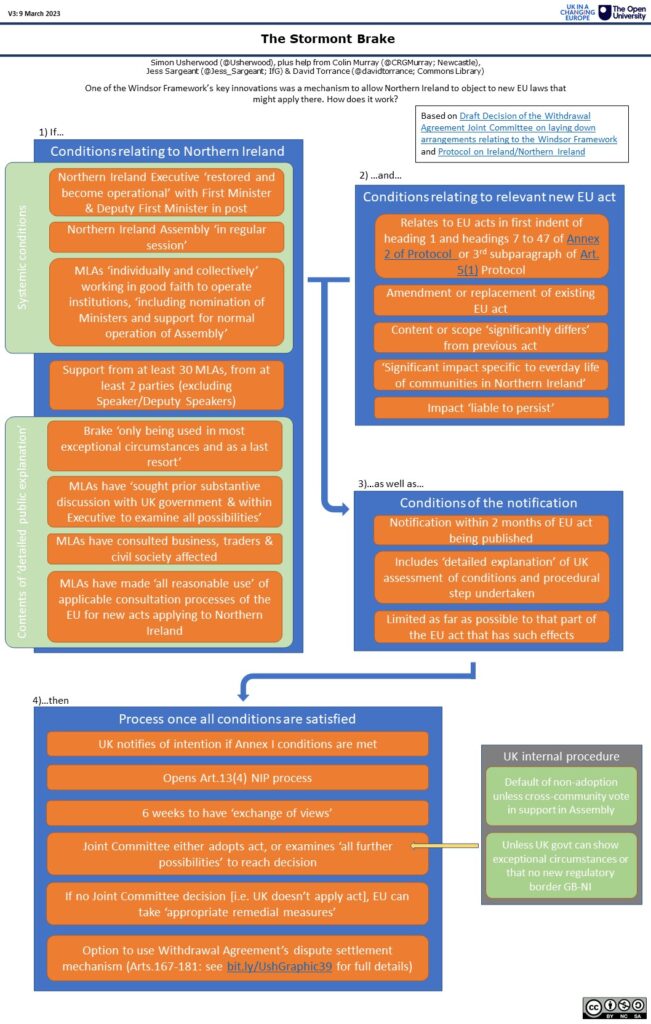The other evening I had a quick drink in Brussels with a bunch of people who could, by any reasonable definition, be described as experts on the technicalities of Brexit.
As I struggled with the whole order-your-beer-via-an-app thing, they discussed the Windsor Framework, as one does in such settings. It was clear that they (just like me) are still very much getting to grips with how it works.
As well as all the documents published last week, it’s increasingly clear that there will be a raft of further legislation and enabling procedure to make it all work. And that lawyers are going to get a lot of billable hours out of this.
A case in point is the Stormont Brake, the new mechanism to allow Northern Ireland a say on the introduction of new EU legislation there.
The graphic at the bottom of this post represents several hours on my part working through multiple documents, another couple of hours trying to re-organise that into a more useable form, and then various exchanges on Twitter about what I’ve missed.
Jess Sargeant at the IfG is the only other person who seems willing to try to do this exercise too and her version is very much worth your time, since it’s much better than mine about process:
https://twitter.com/Jess_Sargeant/status/1630988951262486528?s=20
What I do have is conditions. Lots of conditions.
The first objective here seems to be balancing the giving of voice to Northern Irish concerns about new legislation with the impairment of the Protocol’s functioning. The EU closely defined in the original text what was the minimum needed to keep the North-South border open, so any derogation from that is potentially a problem.
Hence the power given to MLAs is highly circumscribed and highly unlikely to be used (see Steve Peers’ excellent analysis on this too).
The second objective is about incentivising the DUP to return to power-sharing: none of the Brake can work without functioning institutions or a rather vague requirement that MLAs are acting in good faith within those institutions: any hint of messing about on this is grounds to dismiss the entire exercise.
Finally I will note that there’s lots of paperwork requirements here and London has dumped that on Stormont: if the Assembly want to use the machinery then they are doing all of the heavy lifting.
So enjoy this one and remember that it requires not only the Windsor Framework documents to be turned into actual decisions and legislation, but also further activity within the UK on a TBC basis.
Which means next week’s work is going to be about timelines.

